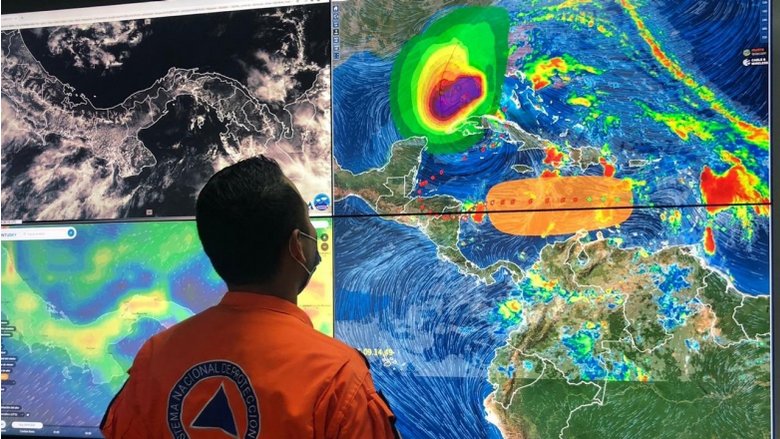Client's perspective
“Our objective is to guarantee the necessary resources to mitigate the risks derived from the COVID-19 pandemic, mainly in the areas of health, social security, food, job preservation and generation of new productive capacities.”
Jorge Almengor, Vice Minister of Finance, MEF
Challenge
Panama’s geographic location exposes it to the increasing frequency and intensity of multi-hazard events, including earthquakes, tsunamis, epidemics, climate-related hazards and coastal floods, among others, which poses major challenges for sustainable and resilient development in Panama and for its efforts to reduce poverty. These events affect Panama’s economy and its capacity to promote sustainable growth and resilient development. For example, the ENSO phenomena during the 2015-2016 dry season caused economic losses estimated at US$72 million in the agriculture sector and US$40 million in Panama Canal revenues. In the first half of 2019, El Niño-triggered drought led to economic losses estimated at US$15 million in Canal revenues, as well as a significant loss of crops and an alarming decline in fresh water resources. In 2020, Hurricane Eta, though it did not make landfall in Panama, caused heavy rains, floods and landslides, resulting in deaths, displacement and agriculture losses totaling US$11 million. Multi-hazard events are also predicted to increase in the Tocumen River Basin on the eastern edge of Panama City, where much of the country’s key infrastructure is located.
Approach
The Panama Development Policy Loan (DPL) with Catastrophe Deferred Drawdown Option (Cat DDO) operation aimed to support the government’s efforts to strengthen the country’s institutional and legal framework for promoting risk reduction and reducing its fiscal and physical vulnerability to disasters in key sectors. The World Bank supported the Ministry of Economic and Finance (MEF) and several other public institutions to implement a comprehensive and multi-sectorial policy agenda aiming to enhance their capacity to manage disaster risk. The DPL with Cat DDO provided not only critical contingency financing for the government to respond to two distinct hazards, the 2015-2016 El Niño-triggered drought and the COVID-19 emergency. More importantly, it provided solid foundations for the country’s Disaster Risk Management (DRM) program. It supported the update of the country’s DRM policy framework through the enactment of the DRM National Policy, developing a planning instrument to efficiently implement the DRM National Policy, and supported the adoption of a framework for the financial management of disaster risk that includes contingency financing, insurance products, and a national emergency fund.
Therefore, strengthening the country’s capacity to manage these risks, by integrating disaster risk reduction in the country’s development and planning policies is vital for Panama’s efforts toward sustainable and resilient development and poverty reduction.
